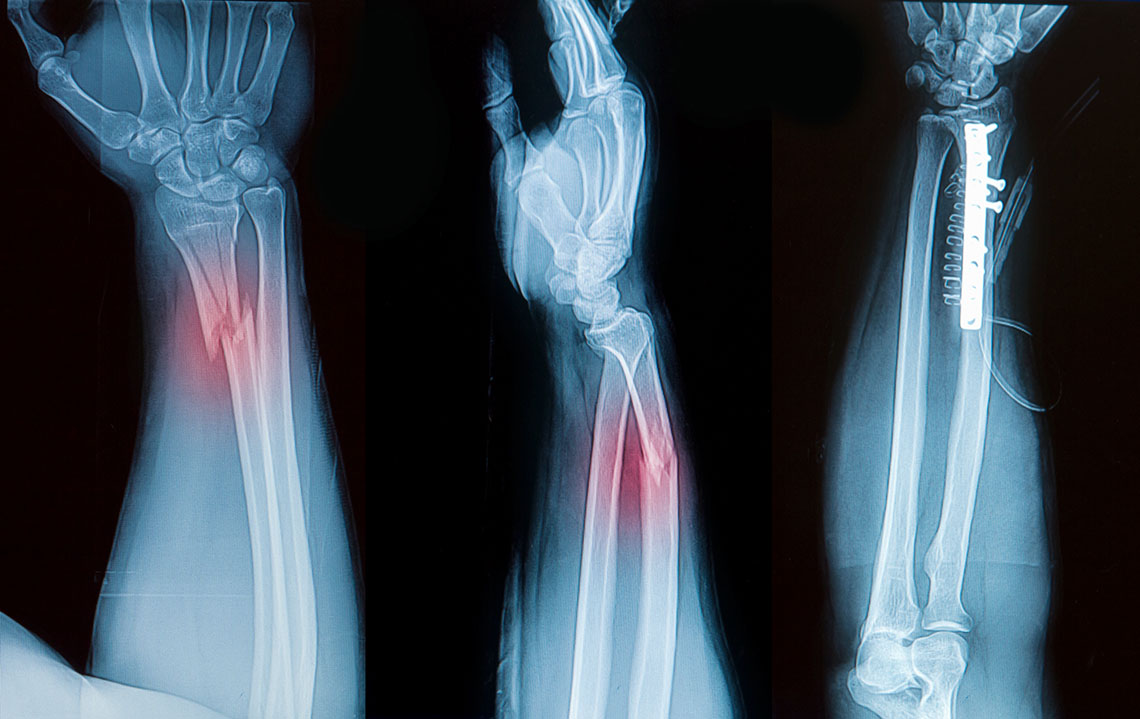Foundations and Basics of Nursing: Unraveling the World of Fractures and Essential Care
Written by Jennifer Huynh, BSN, RN, NCSN
Today, we begin reinforcing our foundational nursing knowledge, focusing on fractures. Throughout this series, we'll delve into various essential topics, covering various aspects of nursing without adhering to a specific order. Fractures are common injuries that many of us have encountered in our lives, either through personal experiences or those of our loved ones. Understanding the basics is crucial with numerous types of fractures and various care interventions. In this blog post, we'll delve into the essentials of fractures, and in subsequent posts, we'll explore them in greater depth, equipping ourselves with the knowledge needed to provide exceptional care for our patients.
To comprehend fractures better, let's first take a closer look at the musculoskeletal system. This remarkable system comprises bones, muscles, cartilage, tendons, ligaments, and other connective tissues. The body's structural framework provides support, stability, movement, and protection. Injuries can manifest differently within the musculoskeletal system, including fractures, dislocations, sprains, and strains. Many of us have encountered one or more of these injuries due to trauma or non-traumatic events.
Now, focusing on fractures, they come in various types, and the circumstances leading to their occurrence can vary significantly. Essentially, a fracture refers to a break in the continuity of a bone, which occurs when a force applied to a bone surpasses its strength, causing damage and breaking the bone structure. Factors such as compression and tensile strength contribute to the likelihood of sustaining a fracture.
When it comes to classifying fractures, they are broadly categorized as complete or incomplete and open or closed:
- Complete Fractures: These fractures involve the bone splitting into two distinct pieces.
- Comminuted Fractures: This type results in the bone breaking into more than two pieces.
- Incomplete Fractures: In this case, the bone remains in one piece, but damage is present.
Additionally, fractures are further classified based on whether the bone breaks through the skin or remains within it:
- Open Fractures: Also known as compound fractures, these occur when the bone breaks through the skin.
- Closed Fractures: Formerly called simple fractures, these fractures do not penetrate the skin.
Understanding the different types of fractures is essential for nurses, who will likely encounter various cases throughout the body and the musculoskeletal system. As healthcare professionals, understanding how fractures occur and where they typically occur can significantly enhance our ability to provide efficient and appropriate care.
For a more comprehensive review, let's further explore fractures based on their direction:
- Linear Fractures: These fractures occur parallel to the length of the bone.
- Oblique Fractures: This type involves slanted breaks in the bone shaft.
- Spiral Fractures: In this case, the fracture line twists around the bone.
- Transverse Fractures: This type is characterized by straight breaks that occur at a right angle to the bone's long axis.
Nurses play a vital role in assessing, caring for, and supporting patients with fractures. Recognizing the specific type of fracture is crucial for planning appropriate interventions and ensuring the best possible outcomes for our patients. Our ability to communicate effectively with the healthcare team and the patient and our knowledge of proper immobilization techniques and pain management are vital components of fracture care.
Understanding fractures is crucial in both the elderly and pediatric populations due to the unique considerations and challenges in these age groups.
In the elderly, fractures become increasingly common due to age-related bone density and strength changes, making bones more susceptible to injury. Conditions like osteoporosis further contribute to the risk of fractures. As nurses, being well-versed in the types of fractures common in older people, such as hip fractures, vertebral compression fractures, and wrist fractures, is essential for prompt identification and appropriate care. Elderly patients may present with atypical symptoms, and fractures can sometimes go unnoticed, leading to delayed diagnosis and treatment. Our knowledge of fractures and the associated assessment tools is crucial in ensuring early intervention, preventing complications, and promoting successful rehabilitation for elderly patients.
On the other end of the age spectrum, the pediatric population also requires specialized attention regarding fractures. Children's bones differ from adults; they are more resilient and have a unique capacity to remodel and heal rapidly, which means that fractures in children may present differently and require specific treatment approaches. As nurses, we must be attuned to the signs of fractures in children, including subtle symptoms and non-specific complaints. Additionally, pediatric fractures can occur in growth plates, affecting bone development and requiring extra caution in their management. Understanding age-appropriate assessment techniques and effective communication with young patients and their families is crucial in ensuring accurate diagnosis and optimal recovery.
In upcoming blog posts, we'll delve deeper into specific types of fractures and their respective subsections, providing a more comprehensive review to enhance our nursing practice. By equipping ourselves with this knowledge, we can ensure that our care remains patient-centered, evidence-based, and aligned with best practices.
Stay tuned as we continue this enlightening journey of reinforcing our foundational nursing knowledge, growing as healthcare professionals, and ultimately making a positive impact on the lives of our patients.
About the Author:
Jennifer "Jenny" Huynh, BSN, RN, NCSN, graduated from the University of Massachusetts Lowell (Umass Lowell) and is certified as a school nurse. She has worked as an RN for six years, focusing on school nursing. Currently, Jenny is working on her Master's in Nursing Education and is an Adjunct Instructor at UMass Lowell.
Jenny is an independent contributor to CEUfast’s Nursing Blog Program. Please note that the views, thoughts, and opinions expressed in this blog post are solely of the independent contributor and do not necessarily represent those of CEUfast. This is not medical advice. Always consult with your personal healthcare provider for any health-related questions or concerns.
If you are interested in learning more about CEUfast’s Nursing Blog Program or would like to submit a blog post for consideration, please visit https://ceufast.com/blog/submissions.




